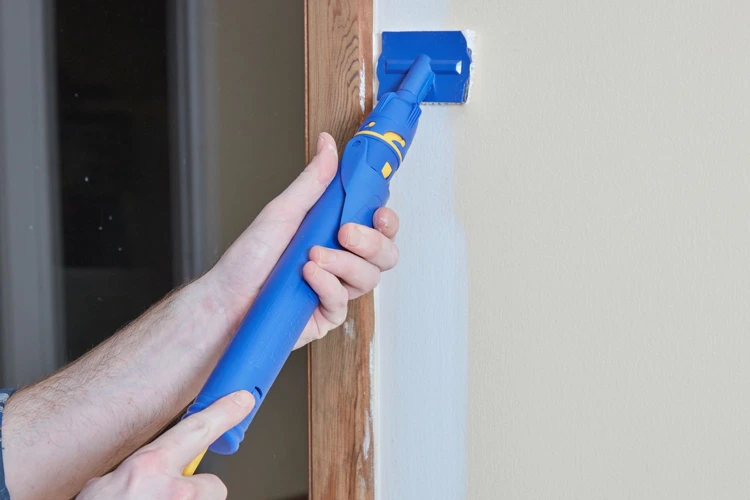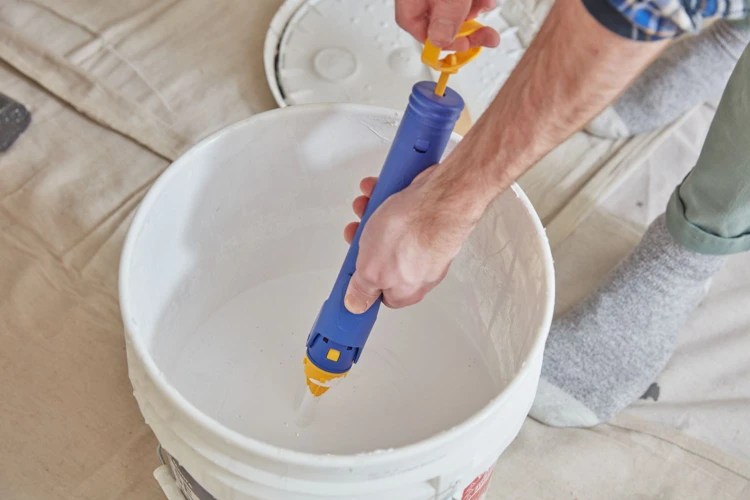Introduction to Paint Edgers
For anyone looking to achieve crisp, clean lines when painting, utilizing a paint edger can be a game-changer. These specialized devices are designed to create straight borders without the bleed that often occurs with traditional brushes and rollers. The right paint edging techniques can ensure a professional-looking finish, whether you’re a seasoned DIY enthusiast or a first-time painter.
Different Types of Paint Edger Tools
On the market, you’ll find a variety of paint edger tools, each with its own set of features. From simple, manual edgers to more advanced, pad-based models, the options cater to diverse needs and skill levels. Some even come equipped with guide wheels or adjustable handles to assist in precision work along trim, ceilings, and baseboards.
Advantages of Paint Edgers
Speed and Efficiency of Paint Edgers
The use of paint edgers can significantly speed up the painting process. They are designed for quick application, allowing you to edge a room in a fraction of the time it would take with traditional methods. Their efficiency lies in their ability to apply a straight line of paint without the need for meticulous brushwork.
Consistency in Application
A major benefit of using these tools is the consistency they offer. Paint edgers provide uniform coverage and line thickness, which can be difficult to achieve with freehand techniques. This uniformity is particularly valuable when working on large-scale projects or multiple rooms.
Reduced Need for Painter’s Tape
One of the top advantages of paint edgers is that they reduce, or sometimes eliminate, the need for painter’s tape. This not only saves time but also money and effort, as applying and removing tape can be a tedious part of the painting process.
Disadvantages of Paint Edgers
Limited Use in Textured Walls
Despite their benefits, paint edgers can be less effective on textured surfaces. The uneven nature of such walls can prevent the edger from making full contact, leading to incomplete lines or the need for additional touch-ups.
Potential for Mess and Smears
Improper use of a paint edger can result in smears or excess paint accumulation along the edges. Achieving the best results often requires a practiced hand and attention to the amount of paint loaded on the tool.
Comparing the Best Paint Edgers
Best Paint Edgers on the Market
When it comes to selecting the best paint edgers, there are several considerations. Look for tools that boast ease of use, clean line delivery, and adaptability to different painting environments. Some of the top-rated models feature ergonomic designs and are favored by both DIYers and professionals alike.
Paint Edger Reviews and Recommendations
Consulting paint edger reviews can provide valuable insight into the performance and reliability of different models. User testimonials often highlight the strengths and weaknesses of each tool, helping you make an informed decision tailored to your project’s needs.
DIY Paint Edging vs Professional Techniques
How to Achieve Professional Results with DIY Paint Edging
With the right paint edger in hand, DIY paint edging can yield results that rival professional jobs. It’s crucial to follow the manufacturer’s instructions and employ a steady hand. Practice makes perfect, and over time, you can develop techniques that produce flawlessly edged walls.
When to Choose DIY Paint Edging Over Professional Services
If you’re considering DIY paint edging, weigh factors like the complexity of the project, your confidence in using the tools, and the cost savings. For straightforward projects, a DIY approach with a quality paint edger can be both satisfying and cost-effective.
Paint Edger vs Painter’s Tape: A Detailed Comparison
Pros and Cons of Using Painter’s Tape
Painter’s tape has long been a staple in creating sharp paint lines. While it’s effective, it can be time-consuming to apply and remove. Additionally, it’s not foolproof — paint can bleed under the tape, and it can peel away existing paint when removed.
Efficiency of Paint Edgers Compared to Painter’s Tape
The efficiency of paint edgers shines when compared to the laborious process of taping. These tools can swiftly edge around a room, cutting down on prep and cleanup time. However, the choice between the two may depend on the specific requirements of your project and your proficiency with the tools.
Maximizing Paint Edger Efficiency
Tips for Effective Use of Paint Edgers
- Load the tool with the appropriate amount of paint to avoid drips or insufficient coverage.
- Keep the edger aligned with the edge for a straight line.
- Clean the tool regularly to maintain a sharp edge and prevent paint build-up.
Maintaining Your Paint Edger for Longevity
To ensure your paint edger lasts through many projects, proper maintenance is key. Clean the tool thoroughly after each use and store it according to the manufacturer’s guidelines to preserve its edge and functionality.
Conclusion: Is a Paint Edger Right for You?
Summary of Paint Edger Advantages and Disadvantages
Paint edgers offer a combination of speed, efficiency, and precision, but they may not be suitable for every surface and require a bit of practice to master. Weighing their advantages and disadvantages will help determine if they fit your project.
If you’re diving into a new painting project and can’t decide on the best type of paint to use, learning about their various advantages and disadvantages is key. For a comprehensive look at different paint types, read our insights on the pros and cons of milk paint, the differences between latex vs. oil paint, and even the pros and cons of using chalk paint for furniture. But what about the tools you’ll use? Specifically, let’s discuss the pros and cons of paint edgers to help you achieve that perfect finish on your walls with ease and precision.
Final Thoughts on Choosing the Right Tool for Your Painting Project
Your choice of tools can make a significant difference in the outcome of your painting project. If you’re looking for a way to edge quickly and cleanly, a paint edger might be the ideal addition to your toolkit. Consider your specific needs, the surface you’re working on, and your personal comfort with the tool to make the best choice for your home improvement endeavors.


